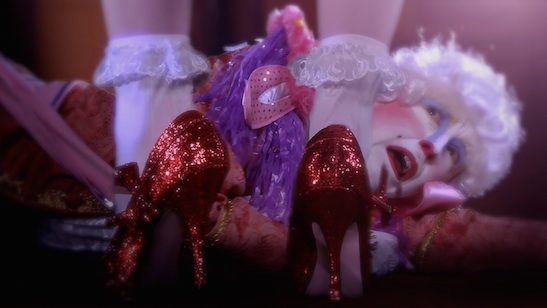On view at our most recent exhibition, MYTH AND MUTATIONS, is a range of work by six artists who mix symbols of the past with elements of contemporary culture to create new allegories. We got together with Chris Romero, the curator of the show, to go more in depth into his creative impulses and inspiration behind the exhibition.
More than ever, contemporary artists are employing evolving technology to bring the dynamic interactions of the digital and physical world to the public. How did you personally become interested in the intersection of art and technology and Internet culture?
I grew up playing a lot of video games – maybe that is not so surprising. I was a bit addicted in some ways. Not really to ones with guns or heavy violence, but the more fantastical and surreal types. I also enjoyed drawing, strange films, and so forth. Exploring chat rooms with my friends in high school was also fun.
When I began thinking about college and such I wasn’t sure what I would do. Studio art and art history (abstract painting mostly) was an interest mostly because I was not aware of this world of art and technology. It took me some time to realize there were artists using the Internet, animation, video, and installations to make works – and that they came from the same mindset as me. In school, South Jersey unfortunately didn’t have that community.
It wasn’t until I was in NYU and taking classes in media art conservation with Glenn Wharton that I realized there was a place for me in the arts that was really a language I understood.
What influence did you find the changes in technology had on artists’ practices during your research?
I think it makes it better really. Being able to create in a virtual world or with virtual tools, or having our eyes and minds affected by things outside of the real world shapes ones outlook and production.
We could say this is the new surrealism, new painting, new body, or whatever but ultimately it just allows artists to more closely create things in their imaginations. They’re doing their own thing – of course its connected to history, but it is also something different.
Also, when I research something I tend to read a lot of fiction rather than just art historical texts. The artists of this show are making works that border fiction and reality.
Where did the idea for this exhibition come from? Could you elaborate on the meaning of the show, “MYTH AND MUTATIONS”?
The idea of the exhibition came from a short passage by Jorge Luis Borges called “Mutations.” In it the author discusses how symbols change over time. For instance an arrow used to be a symbol of power, war, or swiftness. Now we see arrows mostly used for exit signs. Toward the end the author questions why he marvels at such things when time will only alter them.
I felt like the artists of the exhibition kind of answer that question. They aren’t demeaning symbols or making them less important – if anything they elevate them and mutate them in a way that makes us think more about the world we live in and what we see. The power a symbol or iconography can hold. It is a strange world where everything is mixed together and appropriated.
The title of the show then, looks at how different materials, people, objects, basically anything, has a mythology to it, but mythologies are meant to change. You’ll never hear the same story twice. Other texts that inspired this were Roland Barthe’s “Mythologies” and a great book called “Fantastic Metamorphoses, Other Worlds” by Marina Warner that the artist Rachel Maclean introduced me to. So I would also say, another big part of the idea was just based on the artists I know, and that their works are inspired by the past but also looking at our present and potential futures.
The exhibition seems to suggest that certain methods of storytelling transcend time, adapting to evolving technology and image production. What makes myth making and myth telling essential to us?
I think if we didn’t make up stories we would cease to move forward or exist. It’s kind of what makes us human. I feel all the works are very active in making you question certain conventions of what is or isn’t. I’ve seen or heard of many exhibitions on mythologies before that stay in one area, either interpreting a Greek myth, or having objects that are pretty static. I think our generation calls for new mediums and ways of interpreting the world around us. Its essential we question things around us or everything would stay the same.
MYTH AND MUTATIONS will be on view at REVERSE until April 10th.


 Share on Twitter
Share on Twitter Share on Facebook
Share on Facebook